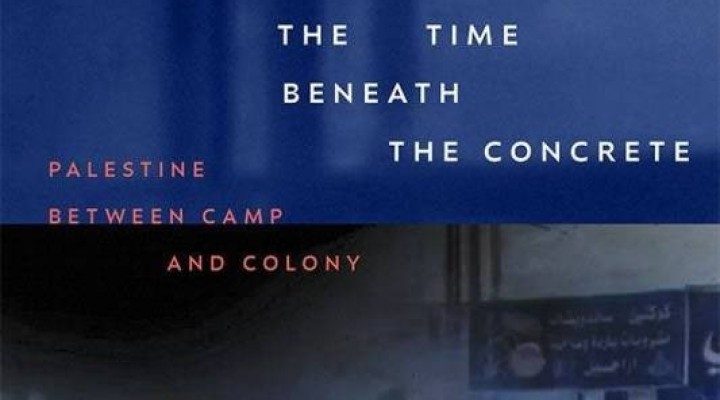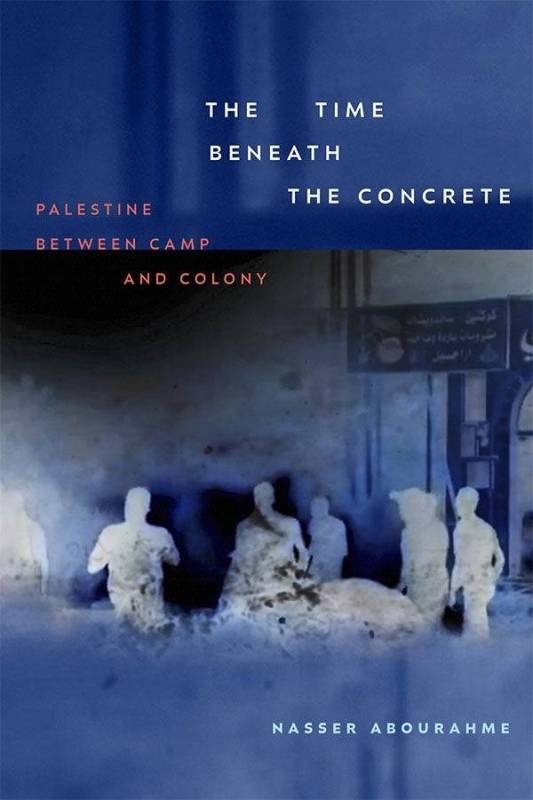The Time Beneath the Concrete: Palestine Between Camp and Colony

- Book Author(s):Nasser Abourahme
- Published Date:February 2025
- Publisher:Duke University Press
- ISBN-13:9781478031444
Finalised during the Israeli genocide in Gaza, which Israel started on 7 October, 2023, Nasser Abourahme’s study, The Time Beneath the Concrete: Palestine Between Camp and Colony (Duke University Press, 2025), brings the Palestinian refugee camp and its many layers of context and significance to the helm. “The only way to really understand how we came to be faced with a frenzied genocidal campaign in Gaza at the end of 2023 is to think about the historical and temporal contradictions of Zionism as a settler colonial project faced with renewed forms of struggle and refusal,” Abourahme writes in the preface. Palestinians have refused to disappear, and thus, Zionist settler colonialism remained at an impasse.
Israel, Abourahme writes, is unable “to move past the past,” while Palestinians refuse: “The closure of the past into settler futurity.” These observations are gleaned from the camp itself because, as the author states: “It is materially and politically installed at the centre of the ongoing history of colonial struggle in Palestine.”
The camp itself presents a multitude of meanings. Palestine being inhabited by Palestinians only reinforced the notion of acquiring land by force, but Zionist discourse imposed nomadic terms upon the indigenous to facilitate the concept and eventual implementation of removal. Zionism faced its own contradiction in promoting negating discourse – disappearing Palestinians – while Palestine was already a thriving land with global economic connections and its own established social structures.
As Israel ethnically cleansed and destroyed Palestinian villages during the Nakba, it also reconstructed its settlements atop the ruins. Palestinians, meanwhile, under the auspices of The United Nations Relief and Works Agency for Palestine Refugees in the Near East (UNRWA) as determined by the international community, found themselves in camps, which Abourahme describes succinctly: “Both contain and shelter those displaced bodies expelled but not allowed to return.” The camps themselves embody a contradiction – their temporary establishment until a solution also requires their dismantling for a solution to be reached. The depoliticisation of Palestinians, Abourahme writes, also kept the political question open and rendered Israel conscious of the camp’s significance for Palestinians, as well as the implications for the settler colonial enterprise itself. Their permanence also ensures that the settler colonists do not see an end to their settler colonial status.
Abourahme’s research portrays imperialism’s influence in creating the Palestinian refugee camps, which were based on racial regimes rather than humanitarian endeavours. He describes the camps as: “An extension of the colonial ordering of the world”. Through an analysis of the language used at the 1949 Lausanne Conference, Abourahme describes how Palestinian refugees were given a passive status that transcended rhetoric while UN General Assembly Resolution 194 on the Palestinian right of return gave way to interpretations that consistently postponed its implementation.
By 1952, the camps’ permanence in terms of structure was also confined to regulations that prevented them from achieving the same standards as neighbouring villages. Abourahme notes that the camps were defined by “excess of regulation” by UNRWA. Eventually, as a result of the 1967 Israeli military occupation of the West Bank and Gaza, the agency’s authority was undermined by colonialism itself, albeit not without UNRWA itself appealing to Israel “to enforce contraventions of its camp regulations,” Abourahme writes. Against this backdrop of complicit authorities, the Palestinian refugees also contested the definition of authority through their own narratives of resistance.
Abourahme’s book also deals with Palestinian literature during the revolutionary period, which prioritises the camps. “If revolution and narrative are about the movement of time, and camps are essentially devices for the immobilisation of time, then how does one stage and write a revolution from the camp?” The author notes that Palestinian revolution: “Didn’t just emerge as a popular mass movement from the refugee camps; in many respects it emerged against the camps as well.”
For Israel, the camps remained “the core of the problem” because return is what haunts Zionism the most. “The camps constitute not just unruly spaces, but the very basis of a consciousness of an unruly time,” Abourahme states. Israel’s preoccupation with the camps as temporary due to the Palestinian refugees’ refusal to disappear led to the Israeli conceptualisation and planning of several initiatives, even alongside international organisations and institutions, to devise solutions. Resettlement remained an occurring plan, although under several guises and in various locations, including Libya, Germany, Saudi Arabia, Syria and Paraguay.
While the coloniser perceives the Palestinian as unable to move forward and, thus, resisting reality, the Palestinian presence is a direct challenge to the less-than-human narrative of the Palestinian in Zionist discourse. If Zionism can no longer deny Palestinian existence, it attempts to minimise presence through the lesser language applied by the coloniser to the indigenous.
Abourahme notes that the Palestinian camps: “Have become a prophetic part of the new normal.” The increase of people inhabiting camps, not only in the Global South, the author writes, form the crises as a result of global capitalism and a reminder of their permanence and unsustainability of the violent status quo that created them. Palestinian camps: “Are our global harbingers, the great forerunners of all but permanent encampment.” It is pertinent, therefore, Abourahme writes towards the end of the book, that: “In every migrant struggle … there is a kernel of anticolonialism, and one – just one – way to see or approach that connection is to read the world from Palestine.”

 TheAltWorld
TheAltWorld 
0 thoughts on “The Time Beneath the Concrete: Palestine Between Camp and Colony”